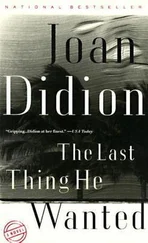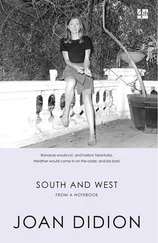During the course of the summer, buoyed by the pleasure of Quintana’s wedding and by the apparent success of the pacemaker, his mood had seemed to lift. In the fall it dropped again. I recall a fight over the question of whether we should go to Paris in November. I did not want to go. I said we had too much to do and too little money. He said he had a sense that if he did not go to Paris in November he would never again go to Paris. I interpreted this as blackmail. That settles it then, I said, we’re going. He left the table. We did not speak in any meaningful way for two days.
In the end we went to Paris in November.
I tell you that I shall not live two days, Gawain said.
A few weeks ago at the Council on Foreign Relations at Sixty-eighth and Park I noticed someone across from me reading the International Herald Tribune. One more example of slipping onto the incorrect track: I am no longer at the Council on Foreign Relations at Sixty-eighth and Park but sitting across from John at breakfast in the dining room of the Bristol in Paris in November 2003. We are each reading the International Herald Tribune, hotel copies, with little stapled cards showing the weather for the day. The cards for each of those November mornings in Paris showed an umbrella icon. We walked in the rain at the Jardin du Luxembourg. We escaped from the rain into St. Sulpice. There was a mass in progress. John took communion. We caught cold in the rain at the Jardin du Ranelagh. On the flight back to New York John’s muffler and my jersey dress smelled of wet wool. On takeoff he held my hand until the plane began leveling.
He always did.
Where did that go?
In a magazine I see a Microsoft advertisement that shows the platform of the Porte des Lilas metro station in Paris.
I found yesterday in the pocket of an unworn jacket a used metro ticket from that November trip to Paris. “Only Episcopalians ‘take’ communion,” he had corrected me one last time as we left St. Sulpice. He had been correcting me on this point for forty years. Episcopalians “took,” Catholics “received.” It was, he explained each time, a difference in attitude.
Not where are they now, dead seven years,
But what they were then?
That last cardioversion: April 2003. The one that had required two shocks. I remember a doctor explaining why it was done under anesthesia. “Because otherwise they jump off the table,” he said. December 30, 2003: the sudden jump when the ambulance crew was using the defibrillating paddles on the living room floor. Was that ever a heartbeat or was it just electricity?
The night he died or the night before, in the taxi between Beth Israel North and our apartment, he said several things that for the first time made me unable to readily dismiss his mood as depression, a normal phase of any writer’s life.
Everything he had done, he said, was worthless.
I still tried to dismiss it.
This might not be normal, I told myself, but neither was the condition in which we had just left Quintana.
He said that the novel was worthless.
This might not be normal, I told myself, but neither was it normal for a father to see a child beyond his help.
He said that his current piece in The New York Review, a review of Gavin Lambert’s biography of Natalie Wood, was worthless.
This might not be normal, but what in the past several days had been?
He said he did not know what he was doing in New York. “Why did I waste time on a piece about Natalie Wood,” he said.
It was not a question.
“You were right about Hawaii,” he said then.
He may have meant that I had been right a day or so before when I said that when Quintana got better (this was our code for “if she lives”) we could rent a house on the Kailua beach and she could recuperate there. Or he may have meant that I had been right in the 1970s when I wanted to buy a house in Honolulu. I preferred at the time to think the former but the past tense suggested the latter. He said these things in the taxi between Beth Israel North and our apartment either three hours before he died or twenty-seven hours before he died, I try to remember which and cannot.
Why did I keep stressing what was and was not normal, when nothing about it was?
Let me try a chronology here.
Quintana was admitted to the ICU at Beth Israel North on December 25, 2003.
John died on December 30, 2003.
I told Quintana that he was dead late on the morning of January 15, 2004, in the ICU at Beth Israel North, after the doctors had managed to remove the breathing tube and reduce sedation to a point at which she could gradually wake up. Telling her that day had not been the plan. The doctors had said that she would wake only intermittently, at first partially, and for a matter of days be able to absorb only limited information. If she woke and saw me she would wonder where her father was. Gerry and Tony and I had discussed this problem at length. We had decided that only Gerry should be with her when she first began to wake. She could focus on him, on their life together. The question of her father might not come up. I could see her later, maybe days later. I could tell her then. She would be stronger.
As planned, Gerry was with her when she first woke. As not planned, a nurse told her that her mother was outside in the corridor.
Then when is she coming in, she wanted to know.
I went in.
“Where’s Dad,” she whispered when she saw me.
Because three weeks of intubation had inflamed her vocal cords, even her whisper was barely audible. I told her what had happened. I stressed the history of cardiac problems, the long run of luck that had finally caught up with us, the apparent suddenness but actual inevitability of the event. She cried. Gerry and I each held her. She dropped back into sleep.
“How’s Dad,” she whispered when I saw her that evening.
I began again. The heart attack. The history. The apparent suddenness of the event.
“But how is he now, ” she whispered, straining to be audible.
She had absorbed the sudden event part but not the outcome.
I told her again. In the end I would have to tell her a third time, in another ICU, this one at UCLA.
The chronology.
On January 19, 2004, she was moved from the sixth-floor ICU at Beth Israel North to a room on the twelfth floor. On January 22, 2004, still too weak to stand or sit unsupported and running a fever from a hospital infection acquired in the ICU, she was discharged from Beth Israel North. Gerry and I put her to bed in her old room in my apartment. Gerry went out to fill the prescriptions she had been given. She got out of bed to get another quilt from the closet and collapsed on the floor. I could not lift her and needed to get someone from the building to put her back to bed.
On the morning of January 25, 2004, she woke, still in my apartment, with severe chest pain and increasing fever. She was admitted that day to the Milstein Hospital at Columbia-Presbyterian after a diagnosis of pulmonary emboli was reached in the Presbyterian emergency room. Given her prolonged immobility at Beth Israel, I know now but did not know then, this was an entirely predictable development that could have been diagnosed before discharge from Beth Israel by the same imaging that was done three days later in the Presbyterian emergency room. After she was admitted to Milstein her legs were imaged to see if further clots had formed. She was placed on anticoagulants to prevent such further formation while the existing clots were allowed to dissolve.
On February 3, 2004, she was discharged from Presbyterian, still on anticoagulants. She began physical therapy to regain strength and mobility. Together, with Tony and Nick, she and I planned the service for John. The service took place at four o’clock on a Tuesday afternoon, March 23, 2004, at the Cathedral of St. John the Divine, where, at three o’clock in the presence of the family, John’s ashes had been placed as planned in the chapel off the main altar. After the service Nick had arranged a reception at the Union Club. Eventually thirty or forty members of the family made their way back to John’s and my apartment. I lit a fire. We had drinks. We had dinner. Quintana, although still fragile, had stood up in her black dress at the Cathedral and laughed with her cousins at dinner. On the morning of March 25, a day and a half later, she and Gerry were going to restart their life by flying to California and walking on the beach at Malibu for a few days. I had encouraged this. I wanted to see Malibu color on her face and hair again.
Читать дальше
Конец ознакомительного отрывка
Купить книгу












